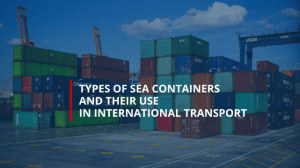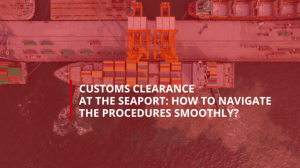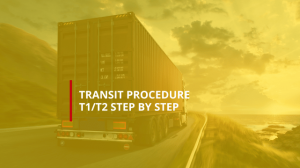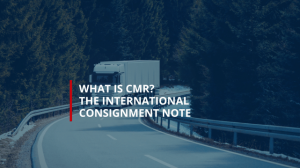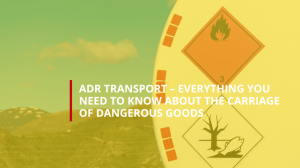

17/04/2024
CBAM – all the information you need
CBAM - ALL THE INFORMATION YOU NEED
In our ever-evolving global landscape, environmental sustainability has become a paramount concern for industries worldwide. Among the strategies aimed at combating climate change, the European Union (EU) has introduced the Carbon Border Adjustment Mechanism (CBAM). This mechanism represents a significant milestone in the EU’s journey towards carbon neutrality, impacting various sectors and international trade dynamics.
Unraveling CBAM: your essential guide
As businesses navigate the complexities of CBAM, questions abound regarding its implications, implementation, and effects on industry practices. In this comprehensive Q&A section, we delve into the intricacies of CBAM, addressing common queries and shedding light on its regulatory framework.
- CBAM stands for Carbon Border Adjustment Mechanism. It’s a measure proposed by the EU to tackle carbon leakage and ensure a level playing field for industries subject to different carbon pricing systems.
- CBAM primarily affects industries with high carbon emissions, such as steel, cement, aluminum, and certain chemical sectors.
- CBAM proposes levying a carbon border tax on certain imports into the EU based on their carbon content. This aims to prevent carbon leakage by ensuring that imported goods face a carbon price similar to those produced within the EU.
- The main objectives of CBAM are to protect EU industries from carbon leakage, incentivize global partners to reduce their carbon emissions, and promote the EU’s climate goals while maintaining competitiveness.
- The products subject to CBAM reporting obligation are listed in Annex No. 1 to Regulation PE 2023/956. These include goods with high carbon intensity such as steel, cement, fertilizers, and certain chemicals.
- CBAM could potentially impact international trade by introducing additional costs for imports into the EU, especially for products with high carbon intensity. It may also lead to discussions and negotiations with trading partners affected by the mechanism.
- CBAM faces several challenges, such as determining suitable methods for measuring emissions across different industrial sectors, minimizing the risk of double taxation, and ensuring compliance with World Trade Organization (WTO) rules.
- CBAM could contribute to reducing global greenhouse gas emissions by incentivizing producers outside the EU to reduce their emissions to avoid border charges. This may increase pressure on industries to invest in low-carbon technologies.
- Main concerns regarding CBAM include worries about increased costs for consumers, the possibility of protectionist trade actions from EU trading partners, and potential negative impacts on developing countries, which may face challenges accessing the EU market.
List of goods and greenhouse gases subject to the CBAM reporting obligation – Annex No. 1 to Regulation PE 2023/956 of May 10, 2023.
The cornerstone of CBAM lies in its reporting obligation, which encompasses a range of products with varying carbon footprints. In this section, we present a detailed list of goods subject to the CBAM reporting obligation, providing clarity on which products fall within its purview and how businesses can navigate this regulatory landscape.
This introductory framework sets the stage for exploring CBAM in depth, offering insights into its significance, implications, and practical implications for businesses operating within and outside the EU.
- Cement
- Electricity
- Cast iron and steel
| CN CODE |
| 2507 00 80– Other kaolin clays |
| 2523 10 00– Cement clinker |
| 2523 21 00– White Portland cement, whether or not artificially colored |
| 2523 29 00– Other Portland cement |
| 2523 30 00– Clay cement |
| 2523 90 00– Other hydraulic cements |
| CN CODE |
| 2716 00 00 – Electricity |
| CN CODE |
| 72 – Cast iron and steel |
| except: |
| 7202 2 – Ferrosilicon |
| 7202 30 00 – Ferrosilicomanganese |
| 7202 50 00 – Ferrosilicochrome |
| 7202 70 00– Ferro molybdenum |
| 7202 80 00– Ferro-tungsten and ferro-silicon tungsten |
| 7202 91 00– Ferro-titanium and ferro-silicon titanium |
| 7202 92 00 – Ironvanized |
| 7202 93 00– Ferroniobium |
| 7202 99– Other: |
| 7202 99 10– Ferrophosphorus |
| 7202 99 30– Ferrosilicon magnesium |
| 7202 99 80 – Other |
| 7204– Iron and steel waste and scrap; ingots for remelting from cast iron or steel |
| 2601 12 00– Agglomerated iron ores and concentrates, other than calcined iron pyrites |
| 7301– Sheet piling of iron or steel, whether or not hollowed out, stamped or made of assembled elements; welded, welded angles, shapes and profiles, made of cast iron or steel |
| 7302 – Structural elements of railway or tram tracks, of iron or steel: rails, fenders and rack rails, switch points, crossing points, switch bars and other crossing elements, railway sleepers, contact strips, rail saddles, saddle wedges, rail washers, fastening clips , base plates, ties and other elements intended for connecting or fastening rails |
| 7303 00 – Tubes, pipes and hollow profiles, of cast iron |
| 7304 – Tubes, pipes and hollow profiles, seamless, of iron (other than iron) or steel. |
| 7305 – Other tubes and pipes (for example, welded, brazed, riveted or similarly closed), of iron or steel, of circular cross-section, the outer diameter of which exceeds 406.4 mm |
| 7306– Other tubes, pipes and hollow profiles, of iron or steel (for example, open seam or welded, brazed, riveted or similarly closed) |
| 7307– Tube or pipe fittings (for example, couplings , elbows, sleeves), of iron or steel |
| 7308- Structures (excluding prefabricated buildings of heading 9406) and parts of structures (for example, bridges and parts of bridges, lock gates, towers, lattice masts, roofs, roof frameworks, doors and windows and their frames, door sills, shutters, balustrades, pillars and columns), of iron or steel; plates, rods, angles, shapes, profiles, tubes and the like, prepared for use in structures, of iron or steel |
| 7309 00 – Tanks, tanks, vats and similar containers for any material (other than compressed or liquefied gas), of iron or steel, of a capacity exceeding 300 l, whether or not lined or heat insulated, but not fitted with mechanical or thermal devices |
| 7310 – Iron or steel tanks, casks, drums, cans, boxes and similar containers, for any material (other than compressed or liquefied gas), of a capacity not exceeding 300 litres, whether or not lined or heat insulated, but not fitted with mechanical or thermal equipment |
| 7311 00– Compressed or liquefied gas containers, of iron or steel |
| 7318 – Screws, bolts, nuts, coach screws, screw hooks, rivets, cotter pins, cotter pins, washers (including spring washers) and similar articles, of iron or steel |
| 7326– Other articles of iron or steel |
- Fertilizers
- Aluminum
- Chemicals
| CN CODE |
| 2808 00 00- Nitric acid; nitrating mixtures |
| 2814– Ammonia, anhydrous or in aqueous solution |
| 2834 21 00 – Potassium nitrates |
| 3102– Mineral or chemical fertilisers, nitrogen |
| 3105– Mineral or chemical fertilizers containing two or three of the fertilizing elements nitrogen, phosphorus and potassium; other fertilizers; goods of this chapter in tablets or similar forms or in packages of a gross weight not exceeding 10 kg except: 3105 60 00 – Mineral or chemical fertilizers containing the two fertilising elements phosphorus and potassium |
| CN CODE |
| 7601– Unwrought aluminum |
| 7603– Aluminum powders and flakes |
| 7604 – Aluminum bars, rods and sections |
| 7605– Aluminum wire |
| 7606– Plates, sheets and strip, more than 0.2 mm thick, of aluminium |
| 7607 – Aluminum foil (whether or not printed or backed with paper, paperboard, plastics or similar backing materials), of a thickness (excluding any backing) not exceeding 0,2 mm |
| 7608– Aluminum tubes and pipes |
| 7609 00 00– Tube or pipe fittings (for example, couplings , elbows, sleeves), of aluminum |
| 7610 – Structures of aluminum (excluding prefabricated buildings of heading 9406) and parts of such structures (for example, bridges and bridge-sections, towers, lattice masts, roofs, roofing frameworks, doors and windows and their frames and thresholds for doors, balustrades, pillars and columns); plates, rods, shapes, tubes and the like, of aluminium, prepared for use in structures |
| 7611 00 00 – Reservoirs, tanks, vats and similar containers, of aluminium, for any material (other than compressed or liquefied gas), of a capacity exceeding 300 litres, whether or not lined or heat insulated, but not fitted with mechanical or thermal equipment |
| 7612 – Casks, drums, cans, boxes and similar containers, of aluminum (including rigid or collapsible tubular containers), for any material (other than compressed or liquefied gas), of a capacity not exceeding 300 litres, whether or not lined or heat insulated, but not fitted in mechanical or thermal devices |
| 7613 00 00 – Aluminum containers for compressed or liquefied gas |
| 7614 – Strands, cables, braided bands and the like, of aluminium, not electrically insulated |
| 7616– Other articles of aluminium |
| CN CODE |
| 2804 10 00– Hydrogen |

